Maintaining high standards or air quality is vital, whether at home or your place of work.
Exposure to dirty air leads to several health problems, especially those related to the respiratory system – allergies, asthma, among others. It can also significantly undermine the quality of your sleep and general wellness.
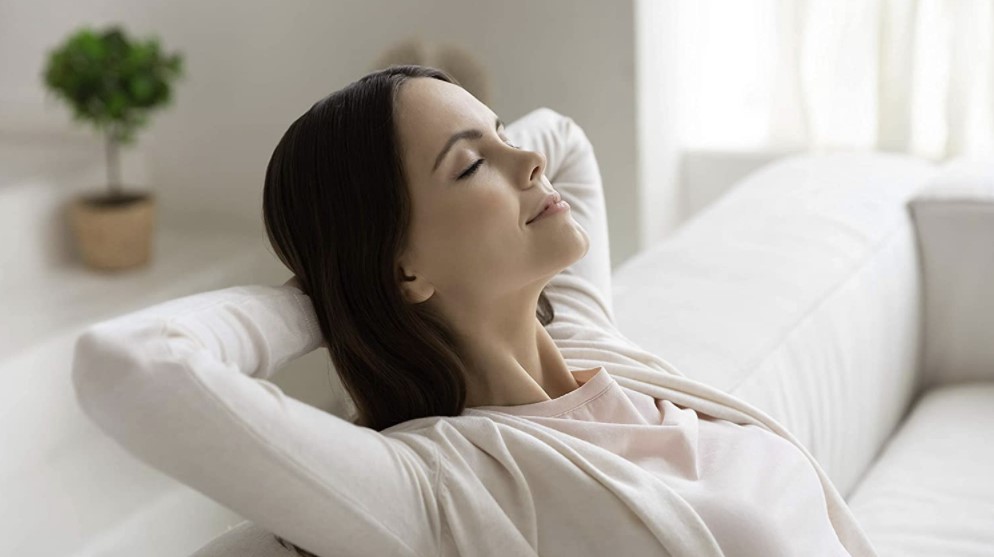
When it comes to keeping the air clean, there are two top items to consider – an air purifier and an air sanitizer. Both appliances work to keep the air clean around you. But with different working mechanisms, deciding on which to buy can be pretty confusing.
Below, we will take a closer look at both air sanitizers and air purifiers, their uses, benefits, and drawbacks. We will also look at the differences, thus allowing you to choose the best one for your needs.
Contents
What is the difference between an air purifier and sanitizer?
Air purifiers and sanitizers have a similar purpose – keeping the air around you clean. The main difference between them is in how they work.
An air purifier primarily cleans the air through the principles of filtration. As such, they are mainly used for cleaning airborne contaminants.
On the other hand, air sanitizers disinfect the air using sanitization mechanisms such as UV light or ionization. They can remove airborne pollutants and surface contaminants at the same time.
Therefore, the main difference between an air purifier and an air sanitizer is that the purifier cleans dirty air using filters while the sanitizer makes use of either UV light or an ionizer.
What is an air purifier, and what does it do?
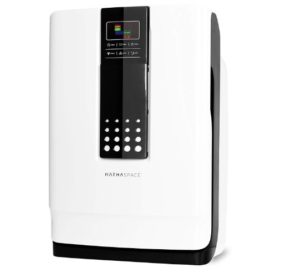
An air purifier is a device used to remove air contaminants from an indoor space. It is one of the most popular types of air-cleaning devices found in most homes. There are also commercial air purifiers that are used to clean air in large commercial spaces.
An air purifier works through the use of a filter or a series of filters. A fan draws in the air and directs towards the filter(s). During this process, the contaminants in the air are filtered out. The clean air is then released back to the room.
The most common air purifiers on the market use a three-step filtration mechanism with different types of filters.
Types of air purifier filters
When shopping for an air purifier, you’ll come across these filters:
1. Pre-filter
A pre-filter is a large filtration device in air purifiers, that captures large particle contaminants such as pet dander, pollen, among others.
Pre-filters usually consist of a cloth or fabric material. However, other pre-filters are made using spongy material.
2. Activated carbon filter
Activated carbon filters, or carbon air filters, are filters that remove volatile organic compounds (VOCs), gases, and odor pollutants from the air.
They are made using a “bed” of charcoal or activated carbon, which has a high capacity for absorbing moisture and gaseous compounds.
3. HEPA filter
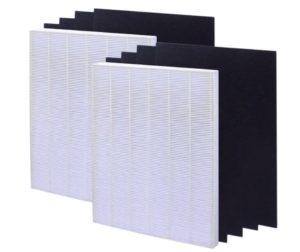
HEPA (high-efficiency particulate absorbing) filters filter nano (micro) pollutants from the air. They are the most common type of filters and are used in various applications, from air purifiers to vacuum cleaners, HVAC systems, cars, airplanes, and more.
There are different levels of HEPA filters, which are determined by the efficiency in trapping particulate matter. The most common one used in an air purifier is the HEPA 13, which filters out 99.95% of particles.
However, you can also find a few air purifiers with HEPA 14 (“medical-grade”) filters, which trap up to 99.995% of particulate matter.
Benefits of an air purifier
There are several air purifier benefits. These are some of them:
- It cleanses the air, removing harmful chemicals from indoor spaces
- Neutralizes unpleasant gases, odors, and toxic volatile organic compounds
- It eliminates the chances of contracting airborne diseases
- It improves sleep quality
- The mechanical filtration mechanisms (filters) make them more energy-efficient. The only electrical energy consumed is for powering the fans.
Disadvantages of an air purifier
But what about disadvantages? Are there any drawbacks of using an air purifier? Yes. Here are some of them:
- Their performance depends on filter quality and the type of fan (for drawing in air)
- Most types of filters are disposable and thus need constant replacement, which can be expensive.
- They don’t have a mechanism for killing the trapped pollutants. Therefore, the air purifier can become a health hazard once the contaminants on the inside build up.
What is an air sanitizer, and what does it do?
An air sanitizer is a device that cleanses the air by neutralizing airborne pollutants in an indoor space. It can include any substance/appliance that works by disinfecting or killing airborne contaminants.
Air sanitizers are unlike air purifiers in that they don’t trap air pollutants. Instead, they act on them through a range of mechanisms, killing them.
Types of air sanitizers
There are different working mechanisms, which depend on the type of the device.
1. Ionic air sanitizers
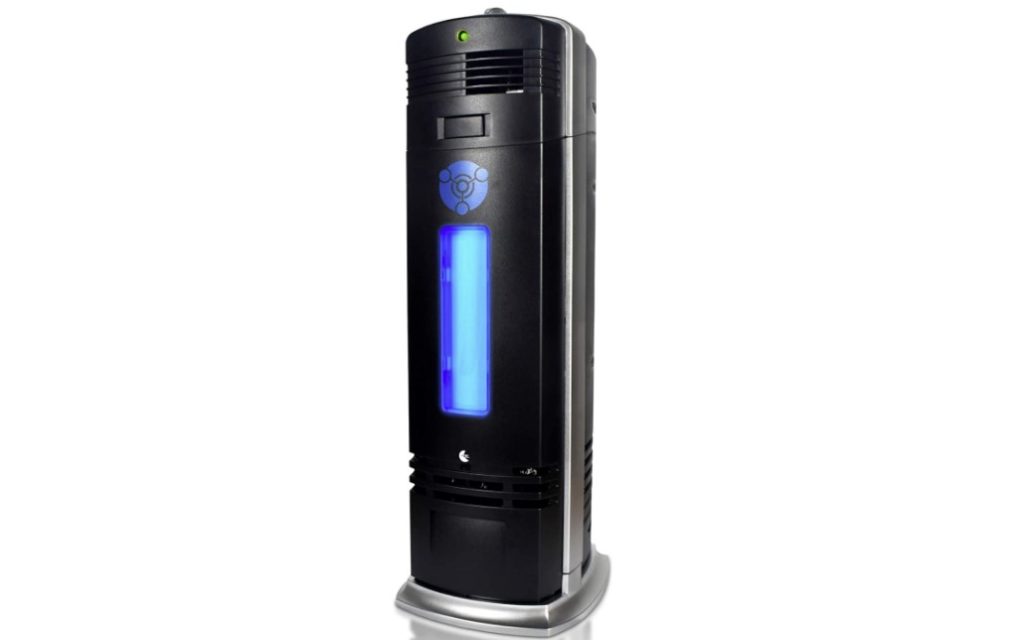
Ionic air sanitizer machines, also known as ionic generators, work by releasing ions (either positively or negatively charged). The ions, once airborne, clean the air by:
- Bonding with opposite-charged particle pollutants causing them to become heavy and fall on surfaces (walls, carpets, floors, furniture, among others) from where you can easily clean them. Some ionic generators also come with filters that trap these contaminants once they bond with the ions.
- Sterilizing the pollutants – ions can oxidize organic pollutants such as bacteria, viruses, and other pathogens, killing them.
- Eliminating odors – likewise, ions can oxidize organic odor-causing particles, kill them, and remove them from the air.
2. UV air cleaners
UV air sanitizers use UV-C (shortwave ultraviolet) light to clean the air by neutralizing various airborne pollutants. They effectively get rid of bacteria, viruses, mold, and other organic pathogens and microorganisms.
UV air cleaners work by forcing air into an enclosed unit through the use of a fan. The air is then passed through UV lamps, irradiated with UV-C light, killing the pollutants. Some of the UV air sanitizers come with filters, which increase the efficiency of pollutant neutralization.
3. Ozone generators
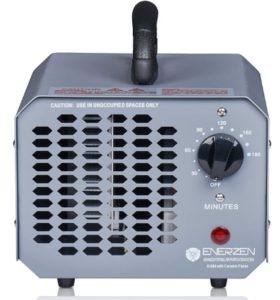
Ozone generators work similarly to ionic air sanitizers. However, there is one distinctive difference – they make use of ozone gas to control the pollutants.
An ozone generator pulls in air from an indoor space and charges it electrically before releasing it back into the room. During the charging process, oxygen molecules transform into Ozone (03) gas.
Ozone is a highly unstable (hence very reactive) substance that can clean the air by attaching itself to pollutants in the air. Ozone gas works as a sanitizing agent, denaturing the cells of microorganisms such as bacteria, viruses, and other pathogens.
For odors and VOCs, the gas reacts with the pollutants, oxidizing them and turning them into odorless substances.
4. Air sanitizer sprays
Electric air sanitizers –such as the one above –are more common in the market, but you can also find ones that come in the form of sprays. These contain a sanitizing agent in an aerosol can or spray bottle, that you’ll apply either airborne or directly on a surface.
Air sanitizer sprays work by killing air contaminants in the air or on the treated surfaces. They should not be confused with air fresheners, which only release a scent to mask the pollutants – and do nothing to eliminate them.
Benefits of air sanitizers
There are several benefits of using air sanitizers:
- A high level of air pollutants control – since they kill (not just trap) pollutants, they do an excellent job of keeping the air clean. Some air sanitizers even come with filters for more efficient air purification.
- Reducing chances of diseases – air sanitizers are efficient in killing viruses, bacteria, and other disease-causing pathogens.
- Removal of foul odors – can work on the nasty smell-causing particles, thus neutralizing bad scents such as smoke, cooking smells, musty smell, among others.
- Improving sleep quality by making the air cleaner, healthier, and more comfortable to breath
- They are more hygienic as they don’t allow the build-up of airborne pollutants.
- Most of them are affordable as they don’t require filter replacements.
Cons of air sanitizers
Despite their benefits, air sanitizers do come with some drawbacks, which include:
- Some produce ozone gas either deliberately (ozone generator) or as a by-product (ionic generators). The gas is highly corrosive to organic matter and can cause damage to the respiratory system, among other health problems, if you are exposed to it.
- While they are great at getting rid of organic pollutants, some might not effectively remove other contaminants from the air.
Air sanitizers vs cleaners – which is the best?
So, which is the best between the two? Well, there is no clear answer – it all depends on your needs. Air purifiers are very effective in trapping contaminants and work great with inorganic pollutants. Sanitizers, on the other hand, disinfect the air and are very good at neutralizing organic particles. On top of that, both have different benefits and drawbacks.
However, looking at purifiers and sanitizers more closely, you can see that they complement each other. Therefore, instead of choosing between the two, you can use them simultaneously to increase air purification efficiency in your home. But, if you have to choose, go with what will meet your needs best.
Additional resources